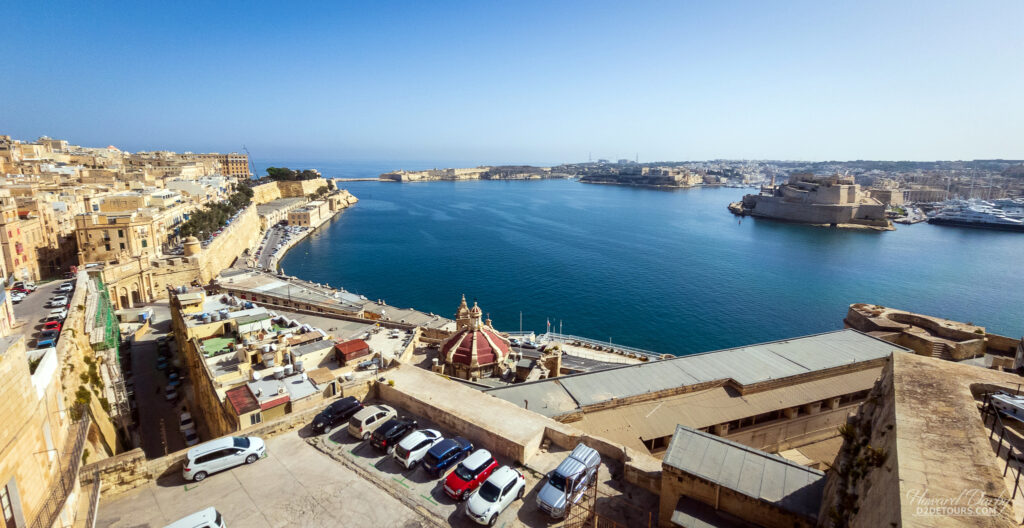
While the Maltese Archipelago may be tiny in terms of land area (316 sq km / 122 sq miles), it has big history – two of the three inhabitable islands (Malta and Gozo) have the remains of megalithic structures predating Stonehenge by more than 1,000 years! Phoenicians established settlements on the islands around 750 BCE and one school of thought believes the name Malta can be traced back to this time when the Phoenicians referred to their outpost as Maleth meaning safe haven.
The Antonine Itinerary (circa 211 CE), is an ancient list of Roman communication/trade routes that includes Malta as one of the stopping points in the Mediterranean. By the 9th century, following several bloody battles with the Byzantine Empire, Arab Muslims from North Africa occupied the islands. After liberating Sicily from the Arabs in the late 11th century, the Normans, descendants of Vikings who had settled in northwestern France, turned their attention to Malta, successfully bringing the archipelago into the Kingdom of Sicily and returning Christianity to the region. In 1530, Pope Clement VII reached an agreement with the Kingdom of Sicily that Malta and Gozo would be permanent quarters for the Catholic military order, the Order of Knights of the Hospital of Saint John of Jerusalem (aka the Knights Hospitaller), in exchange for annual tribute in the form of a single Maltese falcon. The symbolic emblem denoting a Knights Hospitaller, which would later become known as the Maltese cross, was an eight-pointed cross symbolizing the Order’s virtues: loyalty, piety, frankness, bravery, glory, contempt of death, helpfulness (towards the poor and sick) and respect for the church. The Knights were a boon to the standard of living on the islands. They built towns, hospitals, churches, gardens and, perhaps most importantly, fortifications – fortifications that would successfully repel the Ottoman Empire.
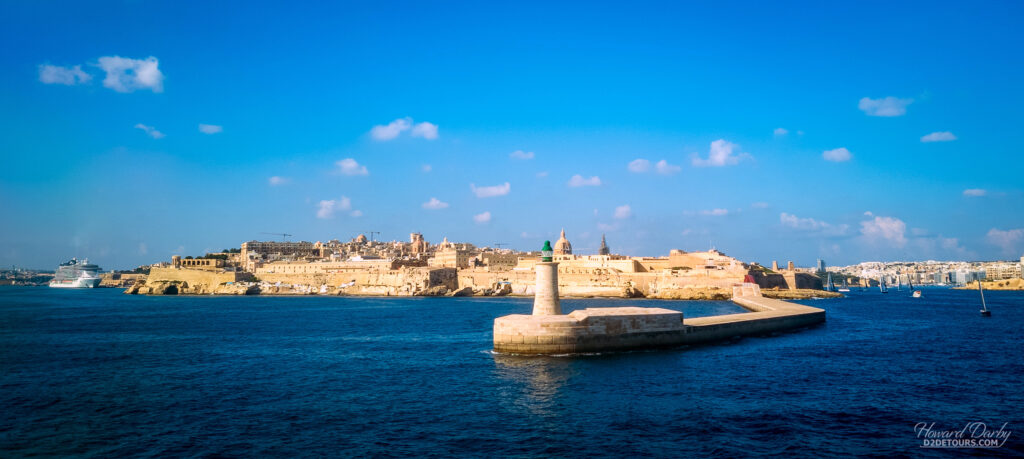
In 1798, when Napoleon was enroute to Egypt to protect French interests from the Ottomans, he stopped at Malta seeking a safe harbour to resupply. The Knights foolishly declined his request. That error in judgment proved costly as only days later Malta became part of the French Republic. The Maltese people were not wholly enamoured with French occupation and very shortly rebelled. After several unsuccessful attempts to capture Valletta, the Maltese turned to the British for assistance and in 1800 the French garrison was forced to surrender. Initially a British protectorate, Malta was formally named a colony in 1813. It was the headquarters for the British Mediterranean Fleet, and an important Allied base during WWII. The State of Malta was granted their independence in 1964, becoming a member of the Commonwealth of Nations. It has been a member of the EU since 2004 and is part of the Schengen Zone.
Dollars – We averaged about $185/day Canadian ($139 USD / €134) for 14 nights, split evenly between the islands of Gozo and Malta. Accommodation, as always, accounted for the biggest chunk of our expenses and staying on Malta was significantly more expensive than Gozo ($79/night versus $57/night). We also included the cost of the ferry (roundtrip) between Sicily and Malta in our daily average which, because we only stayed for two weeks, had a bigger impact on the bottom-line. At $185/day CAD, a month in Malta would cost roughly $5,180 ($3,903 USD / €3,742). We felt a car really wasn’t a necessity, as public transportation covered the islands well, so if you averaged the ferry over a longer period and didn’t have the daily expense of a car lease (and gas), Malta could be very budget friendly.

Environment – On Gozo we stayed in the small northern coastal village of Iż-Żebbuġ (The Zeb-uj), which translates to olive trees, although very few olive trees still grow in the area. The village is not very big and doesn’t even have a grocery store, instead it has a daily truck roaming the narrow streets, announcing its presence with a horn that sounded remarkably similar to the first few bars of the Mission Impossible theme song – it was hard to ignore its arrival!
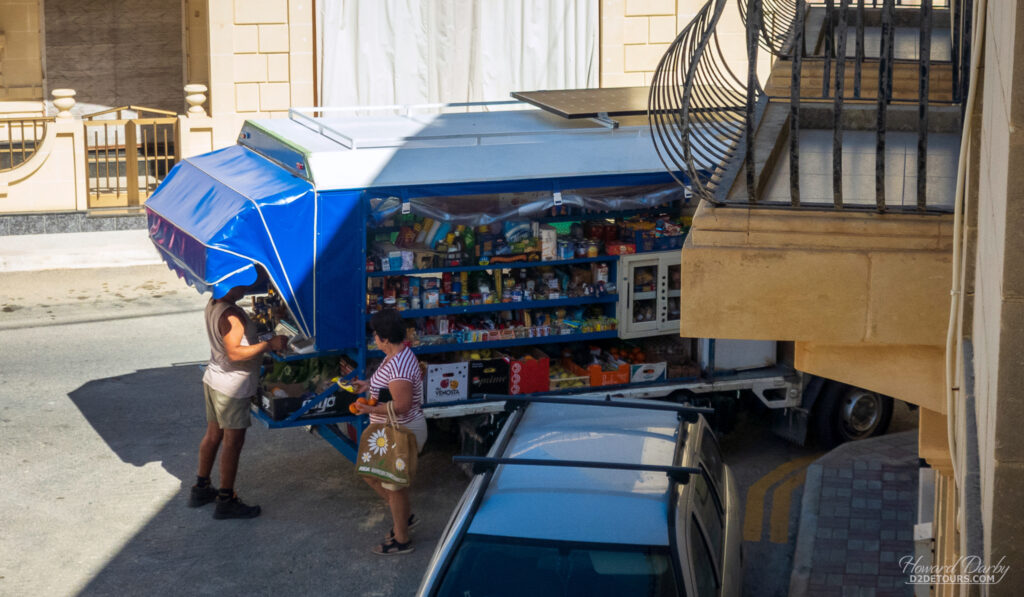
We really liked our Airbnb, and Żebbuġ’s small size made for lovely evening walks. Nothing in Gozo is very far apart, and we really thought Żebbuġ was well situated for getting around the island.

Finding accommodation on the island of Malta that was within our budget was a bit of a challenge, compounded by the fact that we needed parking. We ended up staying in Marsaskala, not too far from the airport.
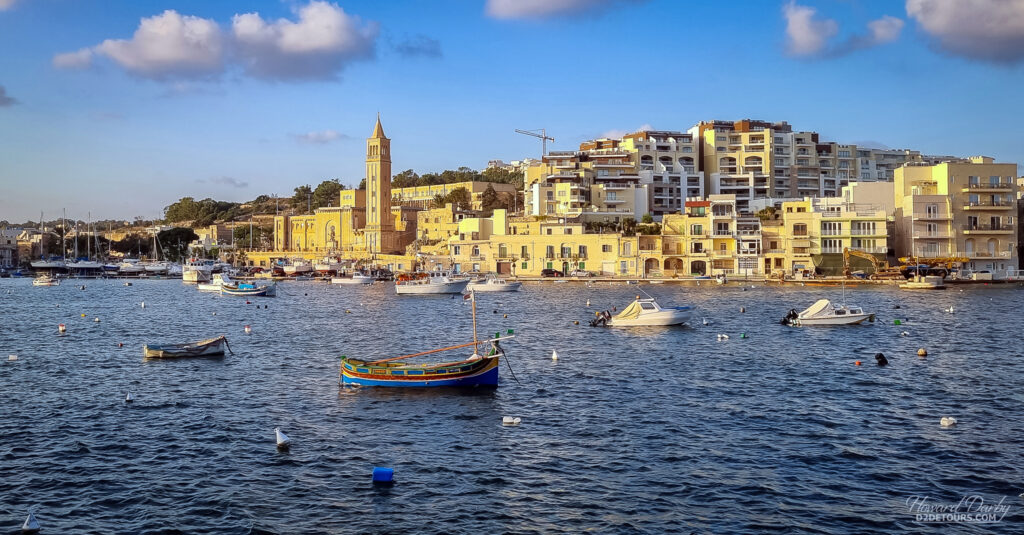
The Airbnb we opted for was much larger than we needed (3 bedrooms/2 bathrooms) but had underground parking included in the price and I have to say it was quite nice having all that extra space, felt more like a home than a rental, and cooking in the kitchen was a joy. The garage, well, it wasn’t quite so spacious. You had to back down a 45° ramp, just wide enough for our car, and then continue backing into the assigned parking stall at the far end of the garage. Once again, I am sooooo glad Howard does the driving and not me! The Marsa neighbourhood was lively and we were just a short walk to the harbour where we caught some lovely sunsets.
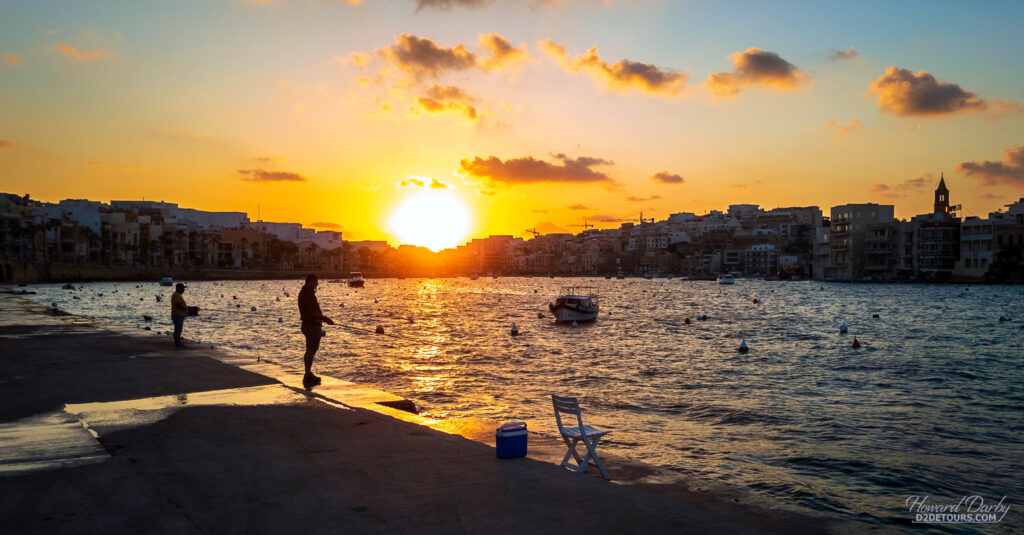
Despite Malta’s brutally hot summer (like 40°C / 104°F or hotter, hot), and the risk of jellyfish in the water, June through August is their busy tourist season, and accommodation prices will be higher. October (when we were there) is perfect weather-wise (mid-20°C / mid-70°F) and rental prices are quite a bit lower.
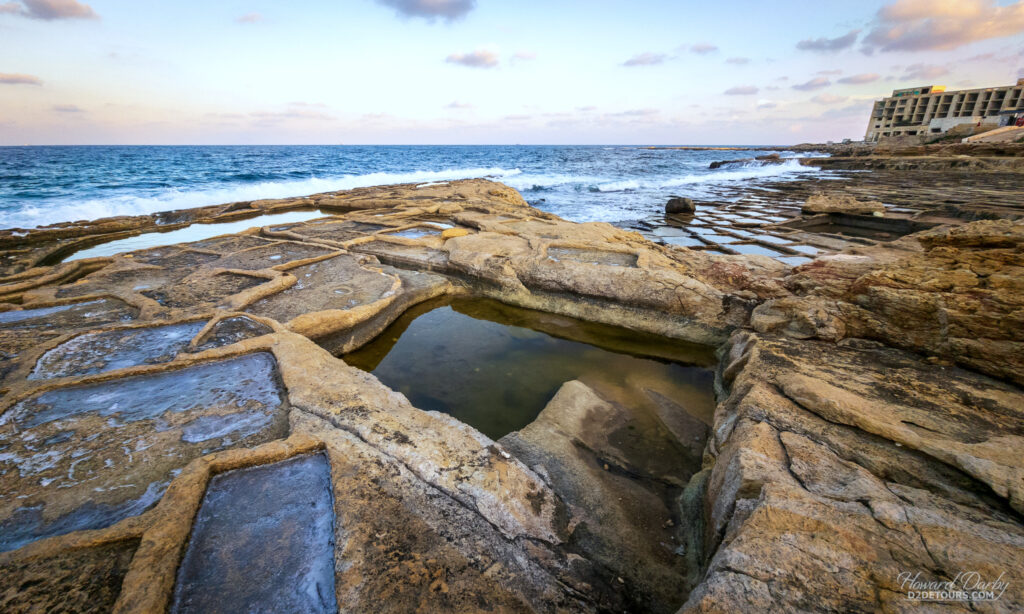
Tips, Tricks & Transportation – When we realized the car ferry from Sicily to Malta was not terribly expensive (€304 / $420 CAD roundtrip) we decided this would be an opportune time to visit, since a trip to Sicily was already on our itinerary. The Virtue ferry line was great! The boarding/disembarkation processes were clear and efficient and the reclining seats were comfortable, which was much appreciated for a 7:30 am departure.

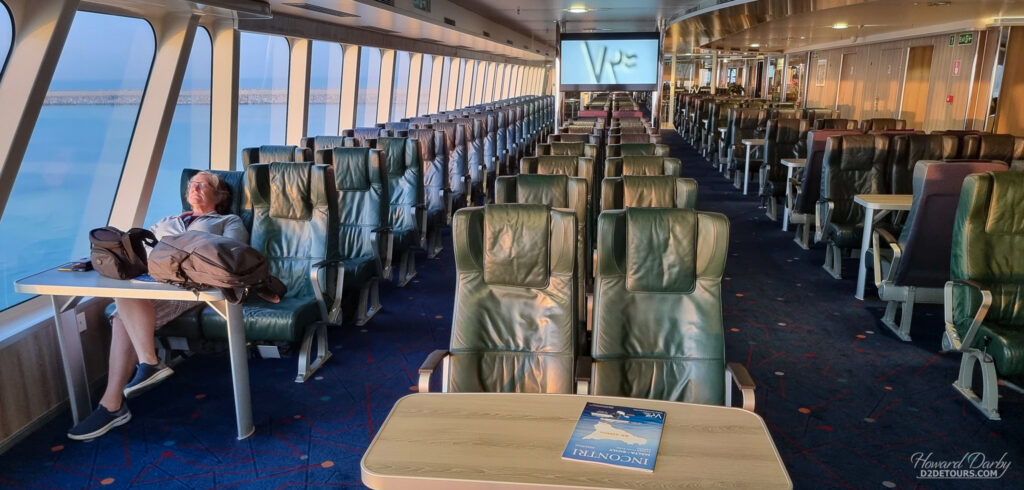
Having a car is certainly not necessary for visiting either Malta or Gozo, although it was nice to have to venture a bit off path and for transporting scuba gear. The ferry between Malta and Gozo was equally well organized and runs quite regularly. You do not pay for the ride between Malta and Gozo; you cover the whole fare on your return trip from Gozo to Malta (€20.35 / $27.50 CAD – €15.70 for the car and driver and an additional €4.65 / $6.40 CAD per passenger, which is the fare all foot passengers pay).
You drive on the LEFT side of the road in Malta, which always takes a bit of getting used to, and the country has several giggle-inducing road signs.
Malta has a tourist tax (€0.50/pp / $0.69 CAD per night, to a maximum of €5/pp / $6.90 CAD per visit). Depending on how you book your accommodation, the tax might be built into the price or you may have to pay it separately upon arrival, which we did with our host on Gozo.
Malta is very popular with British expats and consequently we found the grocery stores well stocked with lots of familiar products; it made cooking at home so easy. We really liked the Greens Supermarket chain which can be found on both Malta and Gozo.
Out and About
Gozo
Measuring roughly 13 km (8 miles) in length by 7 km (4 miles) in width, and with a total island population of only 32,723, Gozo is peaceful and utterly charming.
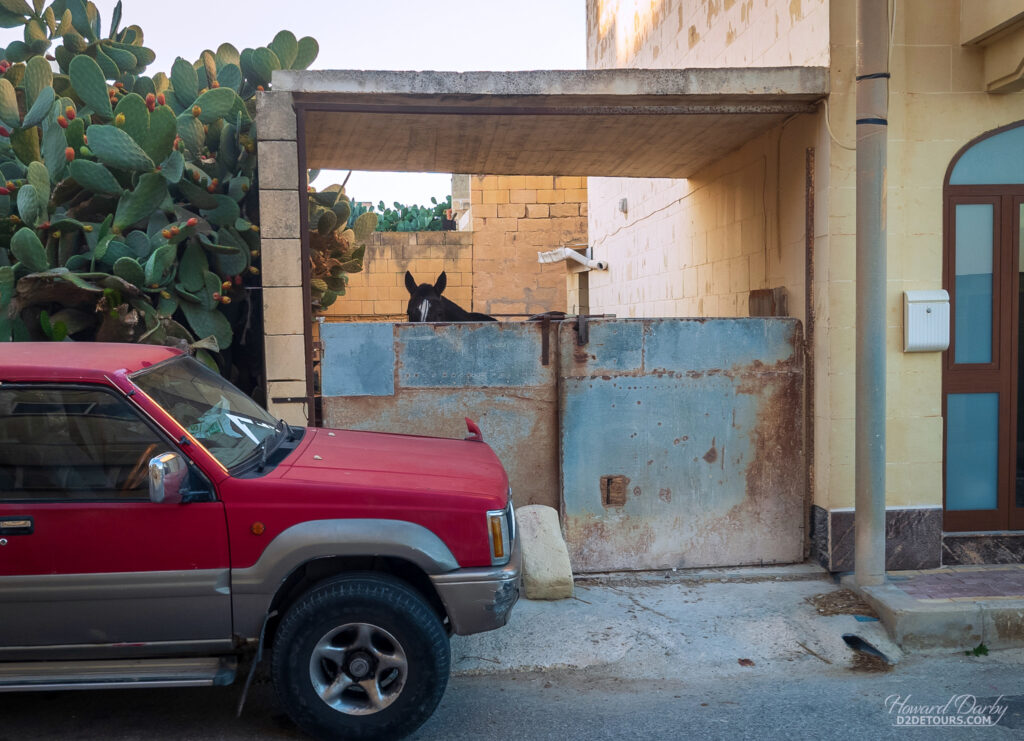
Dusty, narrow roads crisscross the island, and you feel like a weight has been lifted from your shoulders as you soak in the countryside and take a deep cleansing breath.
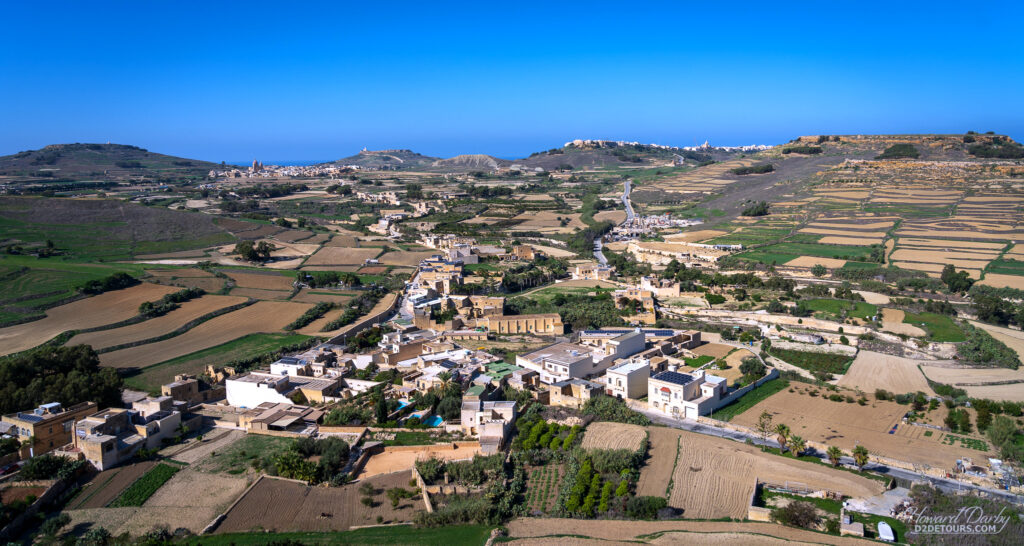
The biggest town on the island is its capital, Victoria, with a population of roughly 6,400. While the streets are busy during the day we went to see a movie one night and by the time we came out at 10:30ish it felt like everyone had gone to bed – and this was a Saturday night! In keeping with the quaint feel of the island, the movie theater, the Citadel Cinema, is tucked into a 19th century townhouse. A large marble staircase leads up from the ticket office on the ground floor to two huge theaters (the combined capacity is 298 seats), one on the first floor and one on the second.
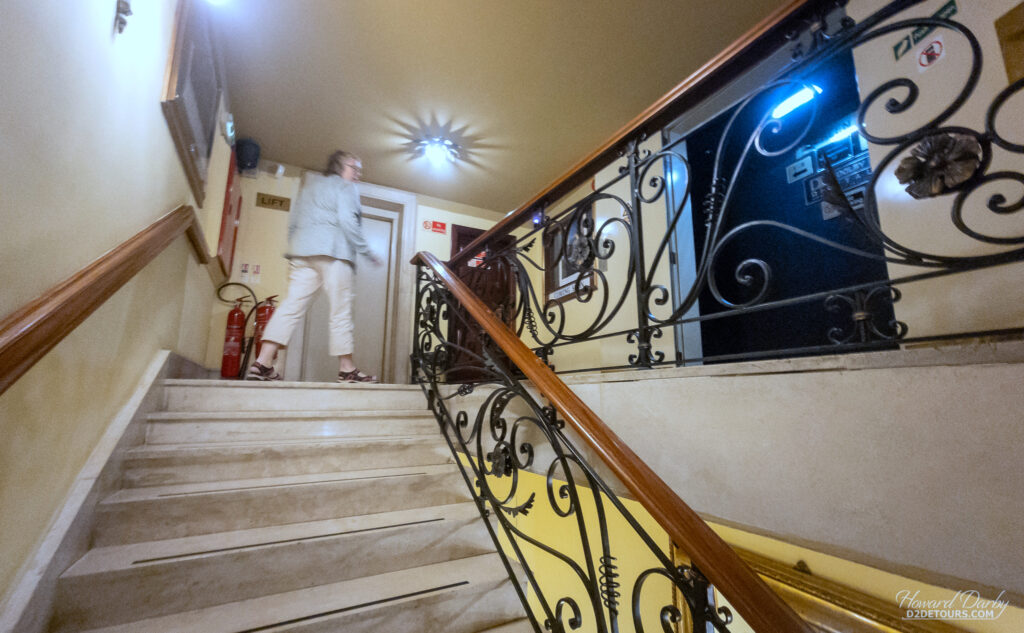
If you want popcorn, you have to wander down the block to a small corner store that, along with pop and candy, has a commercial popcorn popper.
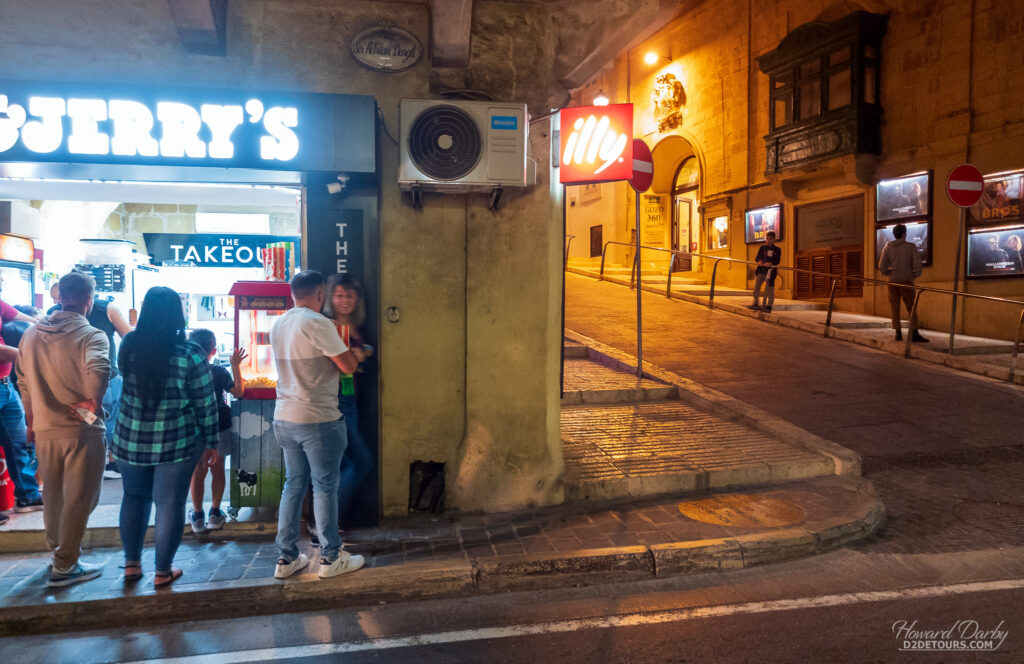
We hadn’t intended on diving during our five month tour around Europe, so didn’t bring any of our dive equipment (masks and computers, in particular), but the waters around Malta are quite inviting. Visibility is excellent and there’s very little tidal activity, given its location in the middle of the Mediterranean, making it ideal for shore diving. Accordingly, we thought it would be a great place to do our first unguided dive. We really liked the people at Gozo Aqua Sports in Marsalforn. They were happy to provide dive site recommendations for rookie, independent divers, and the equipment was well maintained. We opted to dive in Xwejni Bay (Shwenee Bay), which was only a few minutes away from the dive shop.
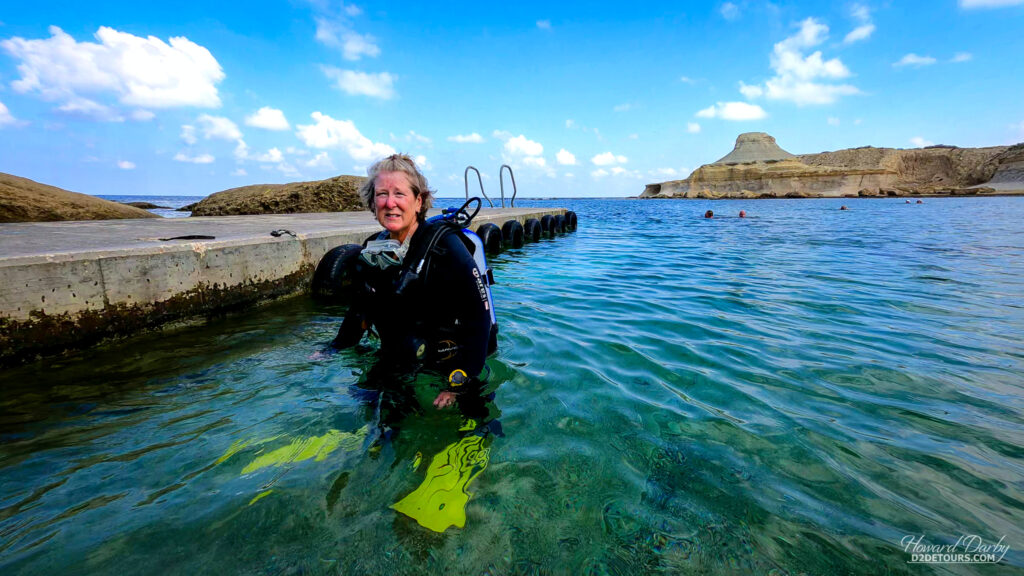
Honestly, not the best dive. I struggled with my weights and an ill-fitting mask, and there wasn’t a lot to see other than sea grass, still we didn’t get lost underwater so all-in-all a successful dive. The waters around the archipelago have lots of options for wreck diving (accessible from both shore and boat) as well as the Blue Hole and the remains of the Azure Window, so when (not if) we come back to Malta, we’ll be sure to have our own equipment and plan for many more dives!
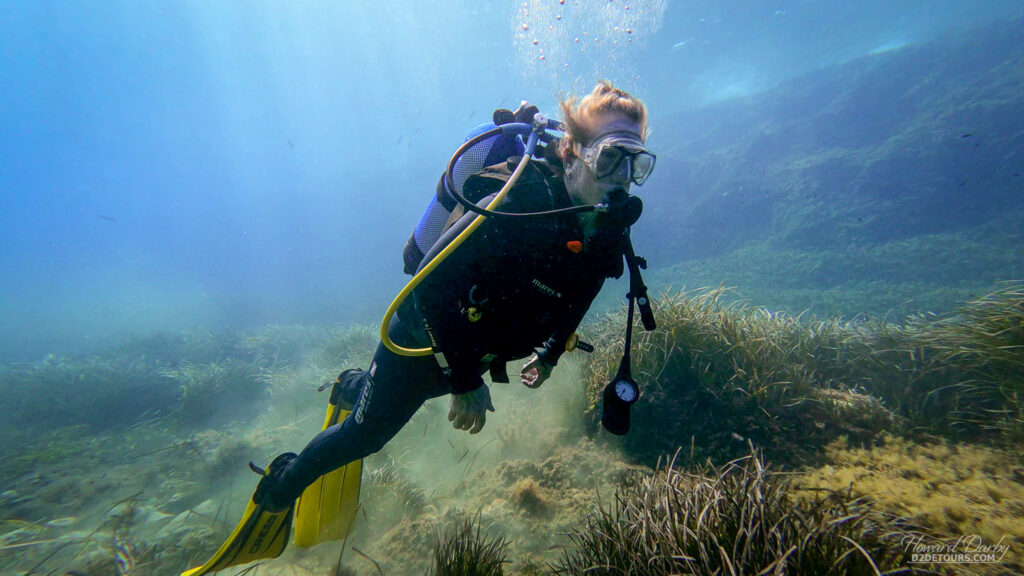
Also located near Xwejni Bay are miles of saltpans.
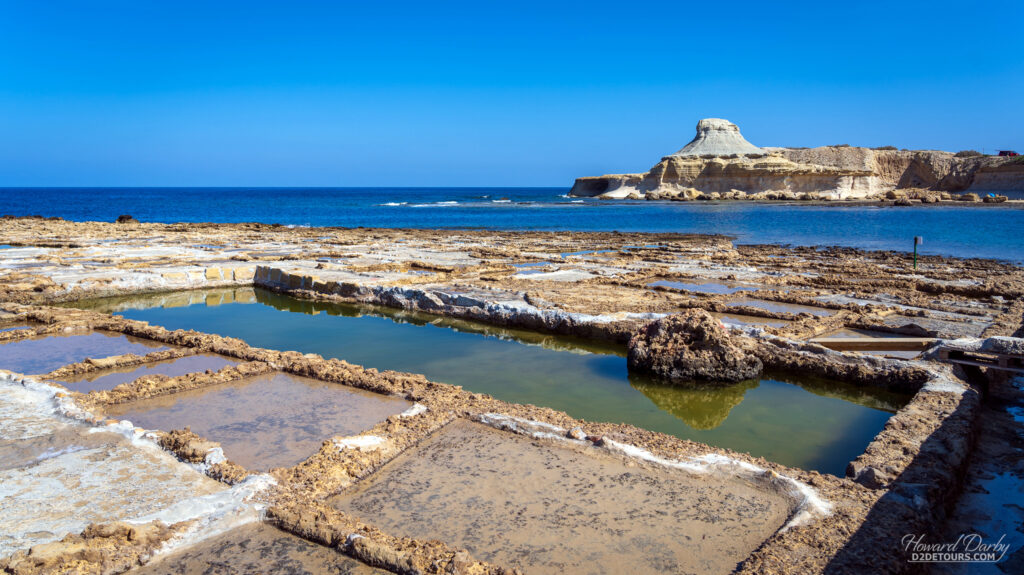
According to the philosopher Pythagoras: salt is born of the purest parents – the sun and the sea. Throughout history it has been a highly valued commodity and is one of the oldest industries in Malta; production can be traced back to the Romans. It reached its zenith with the Knights Hospitaller and the process for producing it through evaporation has changed little since the Romans. The checkerboard of pans nearest to Xwejni Bay have been farmed by the same family since 1969 (three families share the pans along the coast) with the production season running from May to September.

Sea water fills the pans right along the coastline, then that water is channelled to more pans inland where it’s left to settle, finally evaporating to form the salt crystals. The tools of the trade are brushes, buckets, shovels and a pump. Sweeping, lifting and carrying the salt is a back-breaking, labour of love and not surprisingly most of the pans have been abandoned with only these pans on Gozo and some in Marsascala on Malta still being harvested.
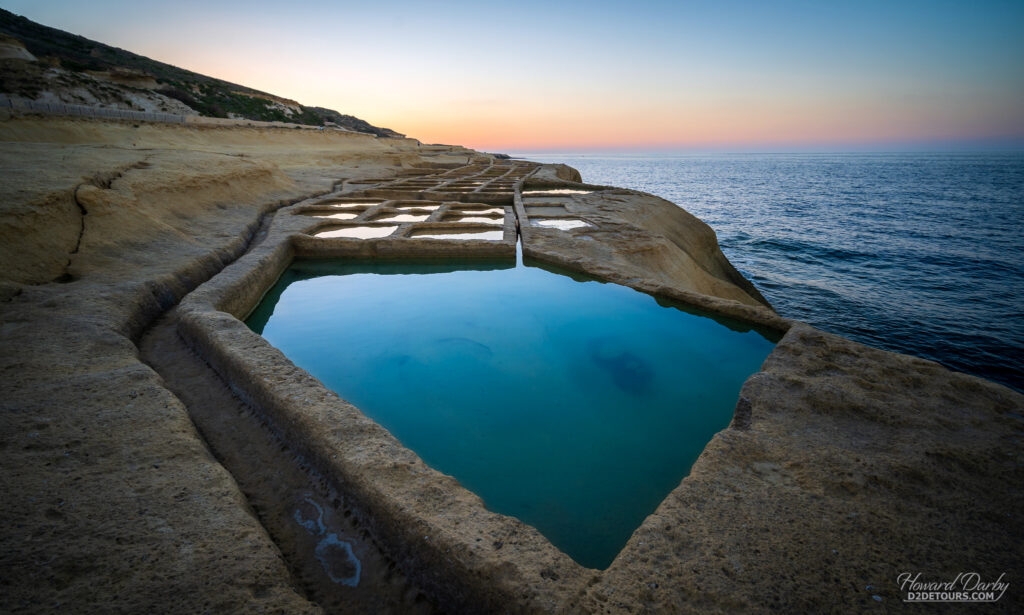
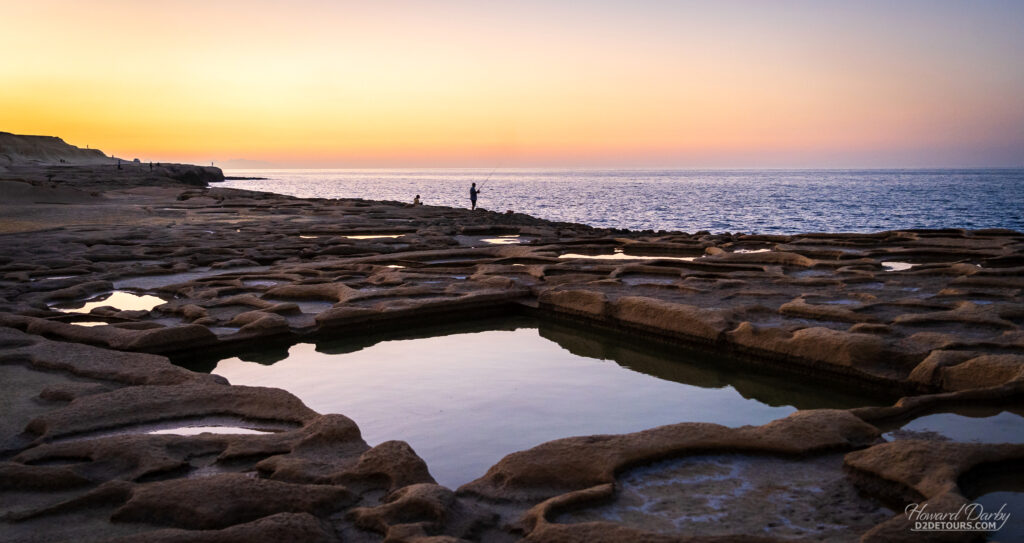
The sea nymph Calypso held Odysseus prisoner in a cave for seven years, or so says Homer’s Odyssey. That cave, supposedly, is situated in the cliffs on the western side of Ramla Bay, on Gozo. It has been closed to the public for fear of collapse but on the other side of the Bay is the Tal’ Mixta Cave which is accessible and is often mistaken for Calypso’s cave. It offers a beautiful vista and I could see how one might believe mythical creatures reside within.
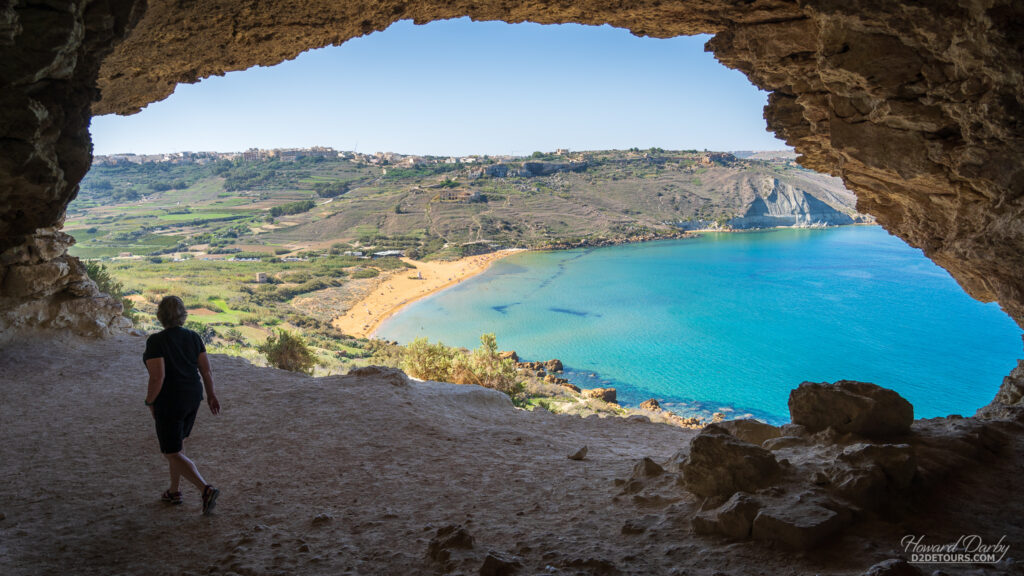
For history buffs, the Citadella in Victoria is well worth a visit. It’s free to walk along the ramparts and inner walkways, but if you want to enter several of the buildings inside the Citadella, you’ll need a ticket.
The Visitor Centre, where you purchase tickets, has a good explanation of the fortifications and it’s worth spending a bit of time there first. The combo entrance ticket – €5 / $7.00 CAD for adults / €3.50 / $4.80 CAD for senior citizens (60+) – gives you access to the Gozo Museum of Archeology, the Gran Castello Historic House, the Old Prison and the Gozo Nature Museum. What they don’t tell you when you buy your ticket is that the Gran Castello and Nature Museum are not open on Mondays; we were visiting on Monday. Fortunately, what we really wanted to see were the archaeology museum and the prison. The museum is not large, yet packs a lot of information into such a small space.
The prison was extremely interesting. Beginning in the mid-16th century, the Knights Hospitaller used the space for their most troublesome members, and the prisoners marked the walls with personal graffiti. Consisting mainly of rather impressive representations of sea vessels, there are also palm prints, names, dates, games and tally marks scratched into the limestone blocks.
Catholicism is Malta’s state religion, and houses of worship in all shapes and sizes are visible throughout the island. Built, in the middle of nowhere, is the Basilica of the National Shrine of the Blessed Virgin of Ta’ Pinu, a “minor” basilica consecrated in 1932 following the religious experiences of a local peasant woman. It is an important pilgrimage site on Gozo and has twice been visited by popes.
Malta

Malta is the biggest island in the archipelago with a population of approximately 410,000, nearly half of whom live in the capital Valletta. It has a good road system but its small size means it often has to get creative when moving traffic around the island – like the road construction detour through the arrivals lane at the airport! Congestion is also a problem. Currently Malta has the second highest number of cars per capita in the European Union – nearly two passenger cars for every three people! Not surprising, parking can be a bit of a challenge. We were staying well outside the typically touristy areas of the island and our Airbnb hostess suggested we not try to find parking in Valletta, rather we should park for free on the streets of Birgu and then take the ferry into Valletta – great idea. A round trip ride was €2.80/pp ($3.85 CAD) and was a most enjoyable route through the harbour.
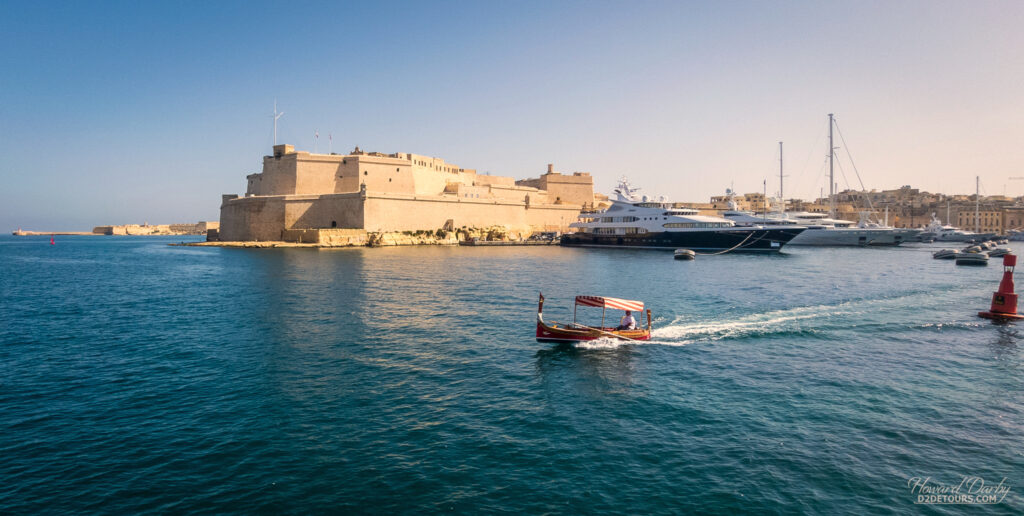
Valletta gets its name from Jean Parisot de Valette, a Grand Master of the Order of the Knights Hospitaller. By the mid-16th century, the Ottomans had already captured Gozo and had been poking at Malta. In early 1565, through his spy network in Constantinople, de Valette learned that an Ottoman invasion in Malta was imminent. He began prepping the island by harvesting all grain (ripe or otherwise) to deprive the invaders of a food source, and poisoning wells. He reached out to Sicily and the Pope seeking additional forces, then he and his Knights hunkered down. No help arrived and in May a fleet of 40,000 Ottomans descended on the small garrison of 700 Knights and 8000 Maltese troops spread around the harbour. The Turks captured the fort at St. Elmo across the Grand Harbour from the fortifications on the Sciberras peninsula. Legend says the Turks floated the headless corpses of captured Knights in the Harbour in an effort to underscore the futility of continuing to hold the peninsula. Undeterred, de Valette retaliated by decapitating all of his Ottoman prisoners and used their heads as cannonballs. By September, reinforcements had arrived from the mainland and the Turks were repelled. The “Great Siege” ended on September 8th, which is now celebrated as a public holiday, il-Vitorja. A new town was built on the Sciberras peninsula and in honour of the heroics of de Valette was named Valletta.
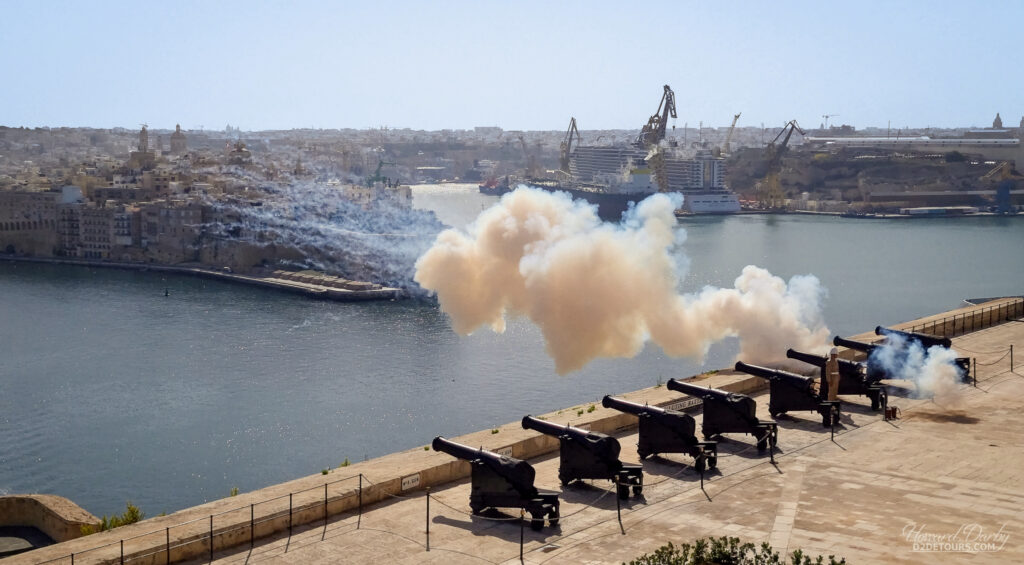
During the Great Siege many regular citizens fled to the interior of the island to the fortified town of Mdina. Much more compact than Valletta, a visit here made for a lovely afternoon excursion for us.
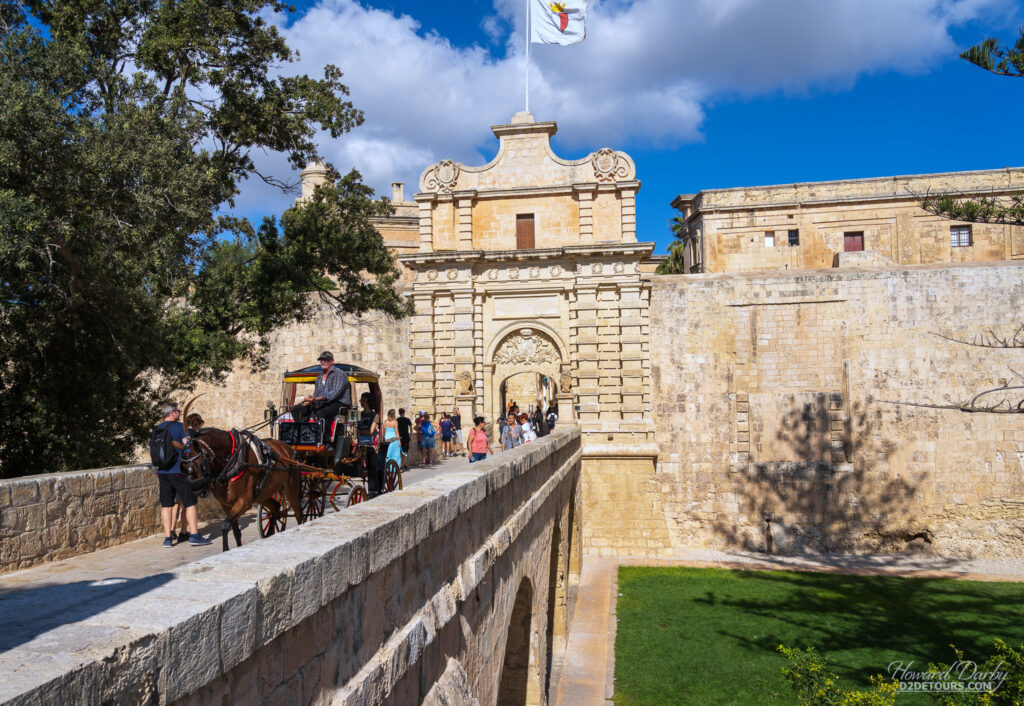
Before coming to Malta, if I were to conjure up an image it would be of sandstone buildings. I have since learned they’re not sandstone; limestone created the “honey-coloured architecture” of the islands. Limestone has been quarried on the islands since time immemorial. It was used to build dry stone walls, fortifications, churches, palazzos, homes and some of the oldest free-standing temples in the world. There are seven megalithic temples still standing on the islands of Malta and Gozo (five and two, respectively). We visited the Ħaġar Qim and Mnajdra complexes, believed to be over 5,000 years old. There is an entrance fee of €10.00 / $13.80 for adults and €7.50 / $10.30 CAD for senior citizens (they never asked for ID, so I confess even though I am not a “senior” I asked for the reduced entrance fee – shockingly they didn’t bat an eye!) What fascinating structures, and I thought far more intriguing than Stonehenge – there are floors, rooms, doorways and roofs. Of course, much of what is “known” about these buildings is pure speculation, but that makes them no less compelling.
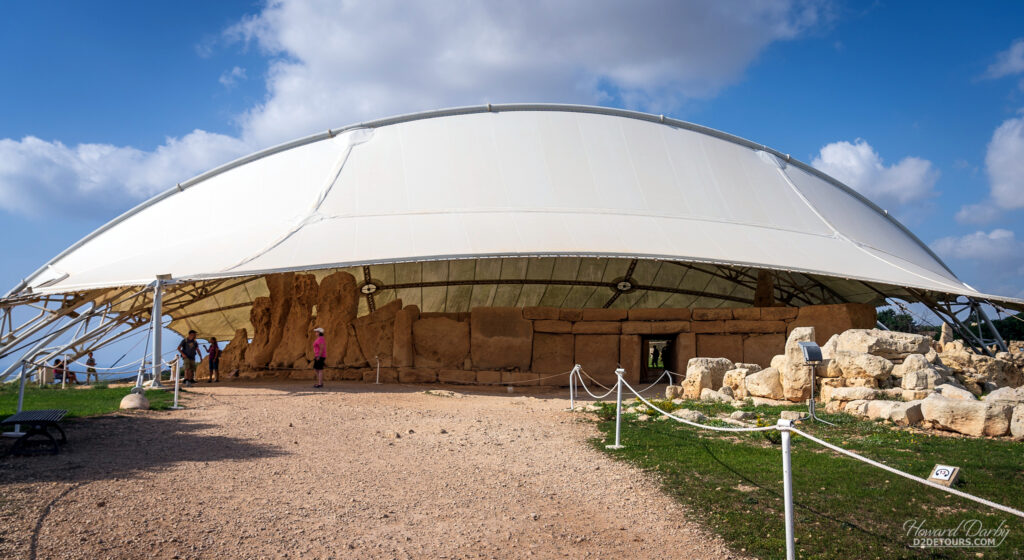

It’s not just the megaliths on Malta that are open to interpretation. There are over 150 different locations on the archipelago that are crisscrossed with what appear to be cart tracks or ruts.
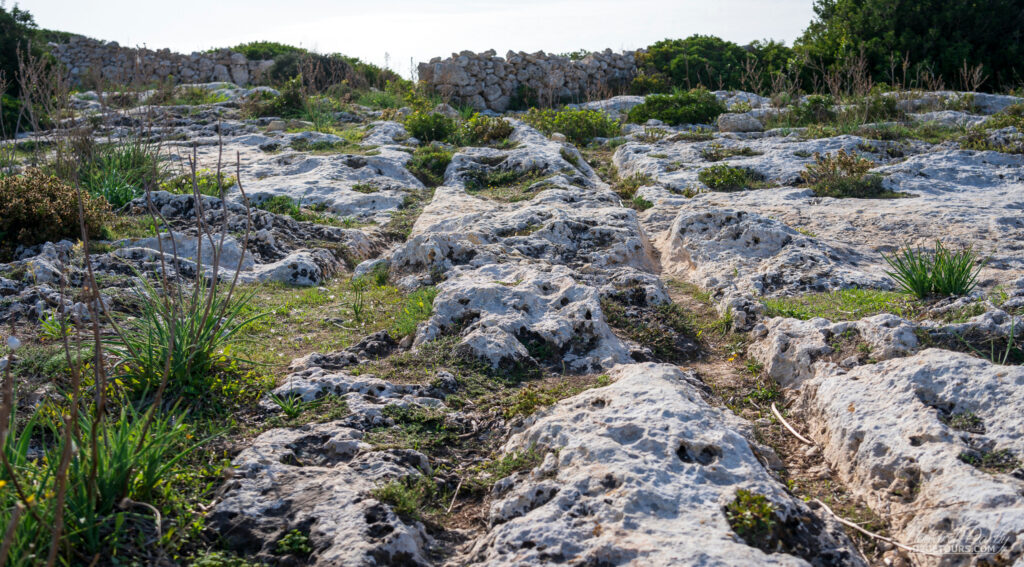
Carved into the limestone are parallel tracks, too precise to be made naturally, and each rut is roughly the width of a cart wheel. Some of these rock grooves are 2700 years old. They run up and down hills, around curves, under water and some lead straight into oblivion at a cliff’s edge. Who, what, why?
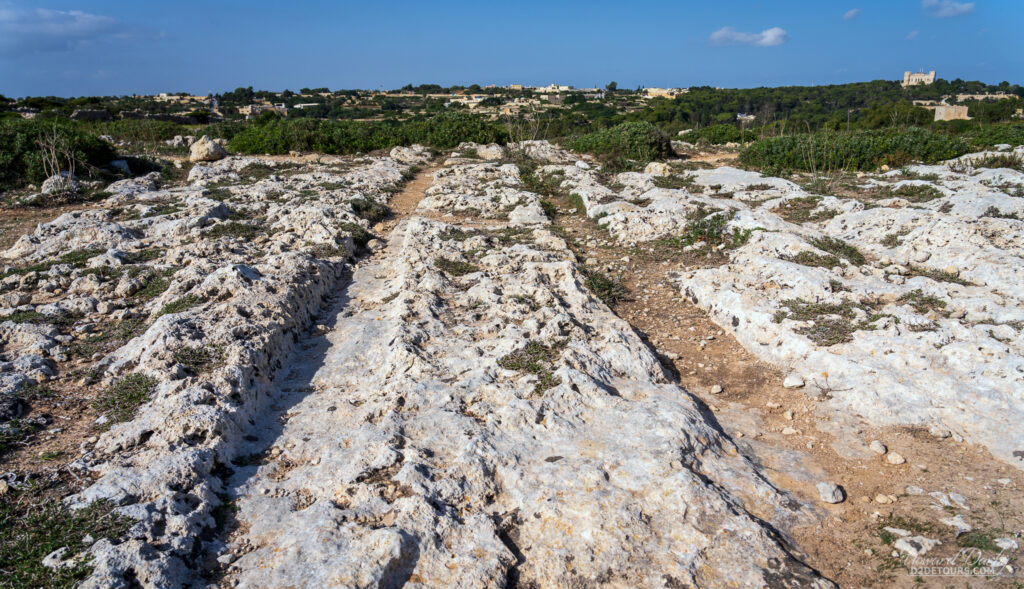

We learned a lot about Malta’s limestone at the Limestone Heritage Park and Garden. It’s housed in an old quarry and although a bit pricey (€9.50/pp ($13.00 CAD and no discount for seniors) it was informative – the ancient “cat door” was very cool! Though having nothing to do with limestone, I thought some of the the signage in the museum’s gardens was delightful. They describe the turkeys found on the island as having “grotesque features reminiscent of their prehistoric past as dinosaurs” and donkeys are “most likeable creatures.”
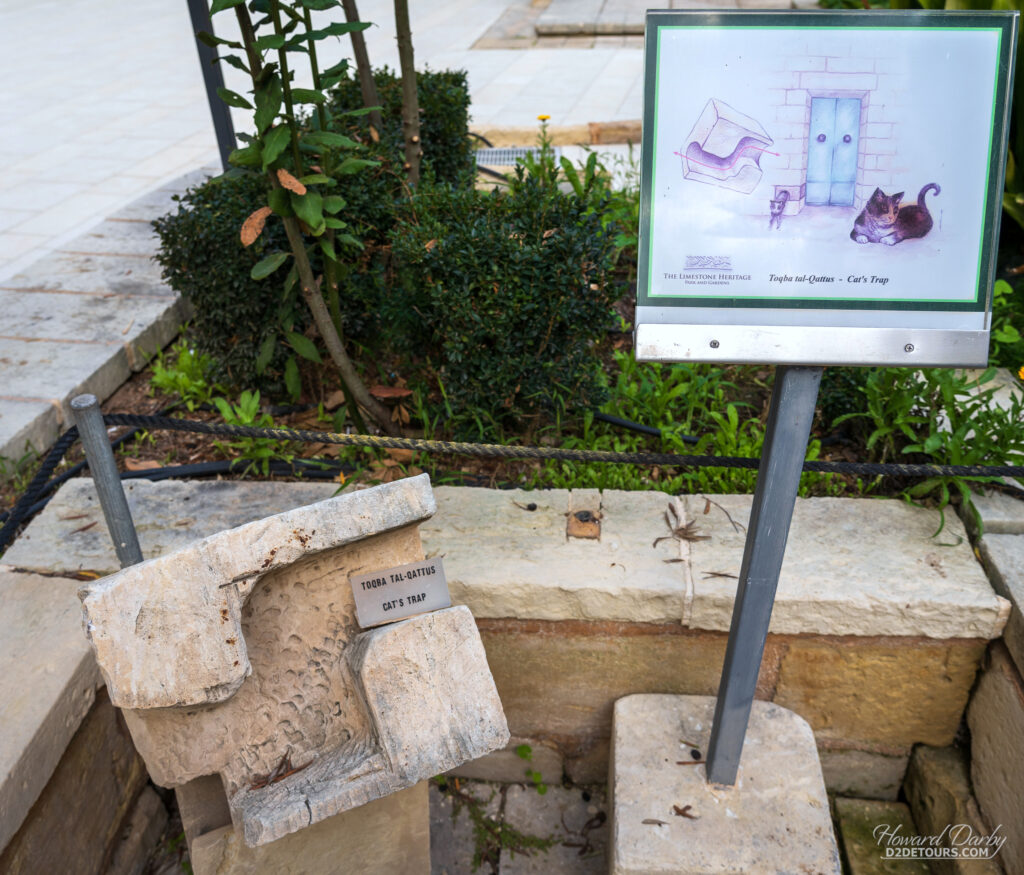
Wandering around Valletta I had been intrigued by the moat surrounding the city. We learned at the museum that they quarried the stones for the city walls right there on the peninsula and the fortifications grew up from the quarry floor, so it’s not really a moat, it’s just an abandoned quarry.
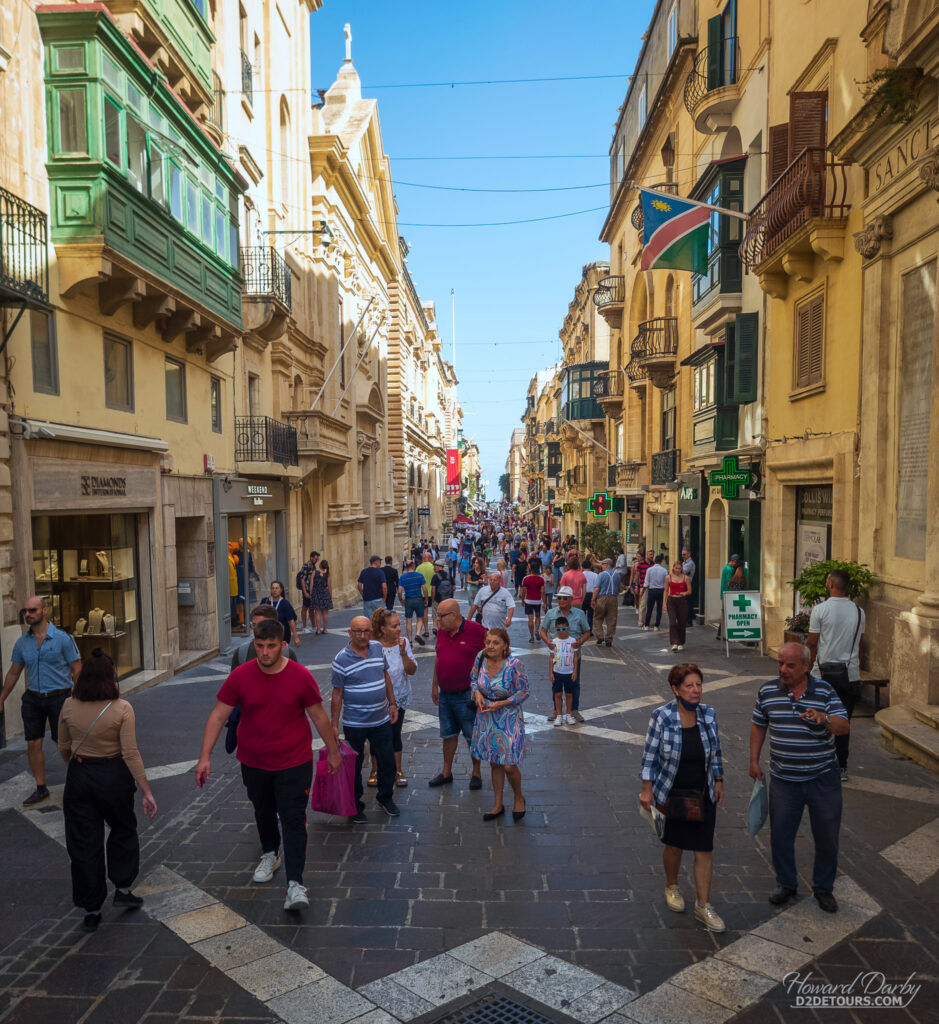
Us – We are still in the early days of nomadic travel so haven’t given a lot of thought to where we might like to settle for a longer stay – there are just too many places we want to see! Generally we’ve found that one to two weeks is the perfect length of stay. We fell in love with Gozo. We don’t need a lot of extra-curricular activities, like music concerts, live theatre venues, or a big restaurant scene – if there’s a movie theatre (which there is in Victoria), that’s our definition of a fun night out. Malta in general has an excellent health care system and Gozo, in particular, has sunshine and water, two of our biggest criteria. Pretty landscape for the occasional trek, great grocery stores, modern, economical accommodation – Gozo now sits alone at the top of a newly created list of ideal, extended-stay locales. Off to Sicily.

Restaurants – In the Balkans our go-to evening snackage was often ajvar (red pepper dip) or tomato/garlic hummus. In Malta we discovered their traditional dip, arjoli, which is made with capers, onions, tomatoes, olives and sunflower oil. To be really authentic it should be eaten with snails (blech) but spread on some crusty bread, mm-mm-mm.
We have come to the realization that a section on “restaurants” in our blog posts may be a bit of a misnomer, as we rarely eat out and when we do, we tend to gravitate toward simple fare like Jeff’s Pastizziria in Valletta. We grabbed a delicious meat pie and a beverage (€3.30 / $4.50 CAD) from the counter and enjoyed them while watching a cruise ship head into the harbour.
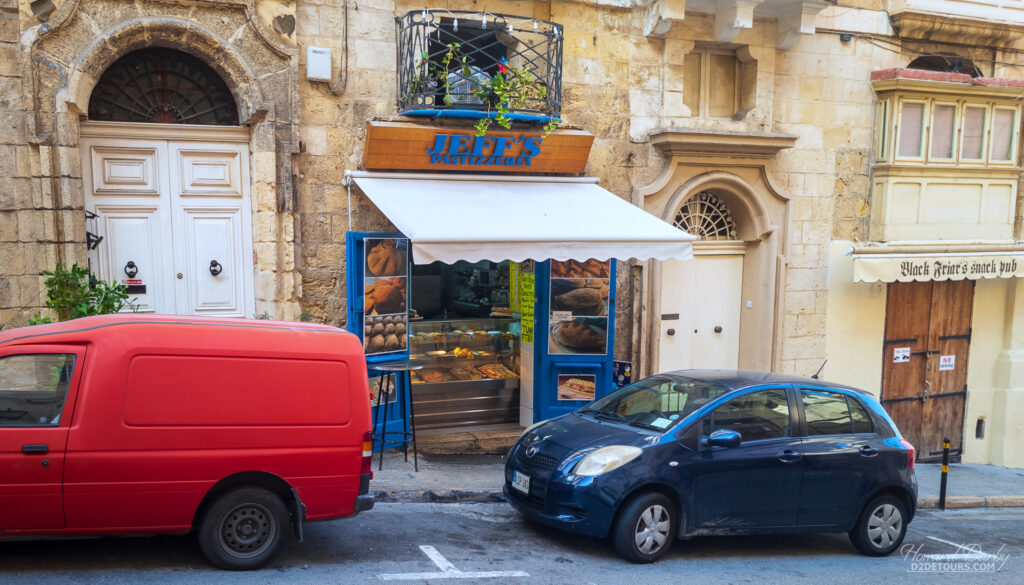
Speech – Maltese is a blend of dialects – North African Arabic and Sicilian Italian and along with English is the official language of Malta. Our English was understood any time we spoke, yet just listening to the conversations around us, all we heard was Maltese. Nearly two-thirds of the population is also conversational in Italian – which was evident on the ferry crossing where every announcement was in Maltese, English and Italian. If you want to try out some Maltese, these are always good, basic words to know:
- Bonġu (Bon-ju) – Good morning (just plain Hello is perfectly acceptable at any time);
- Ċaw (Chaw) – Goodbye;
- Iva (Ee-va) – Yes;
- Le (Lay) – No;
- Jekk jogħġbok (Yek yoh-jbok) – Please;
- Grazzi (Grats-ee) – Thank you / Grazzi ħafna – (Grats-ee hawf-na) – Thank you very much;
- Ta’ xejn (TA sheyn) – You’re welcome;
- Ma nifhimx (Maa ni-fimsh) – I don’t understand;
- Titkellem bl-Inglizn (Tit-kell-em blin-gleez) – Do you speak English?
- Skużani (SCOO-za-nee) – Excuse me;
- Jiddispjaċini (yid-dis-pya-CHEE-NEE) – I’m sorry.
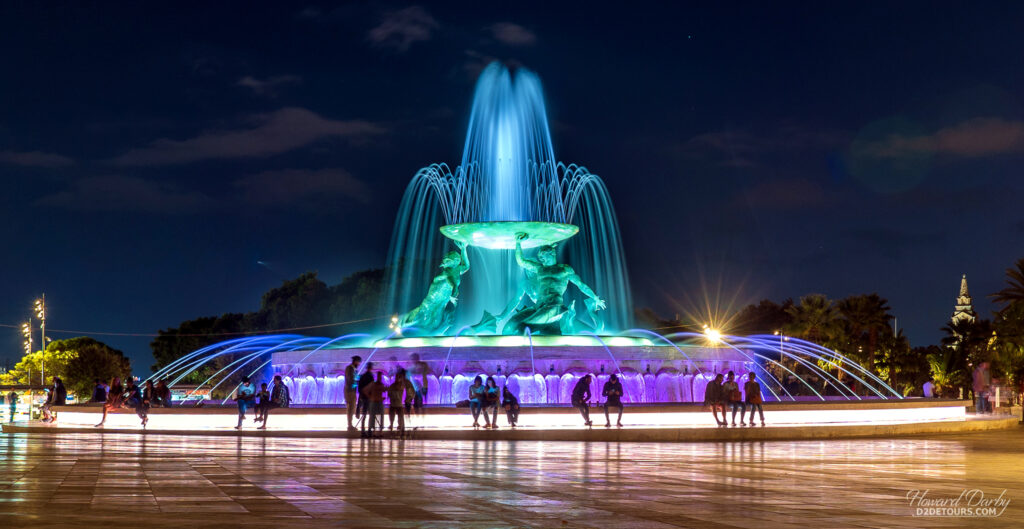
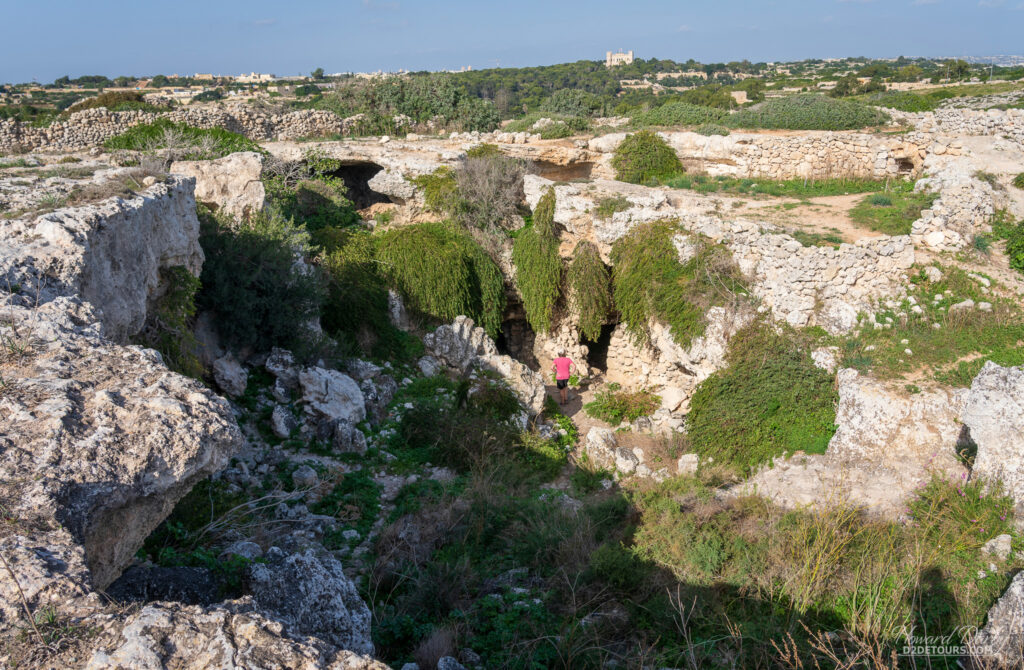
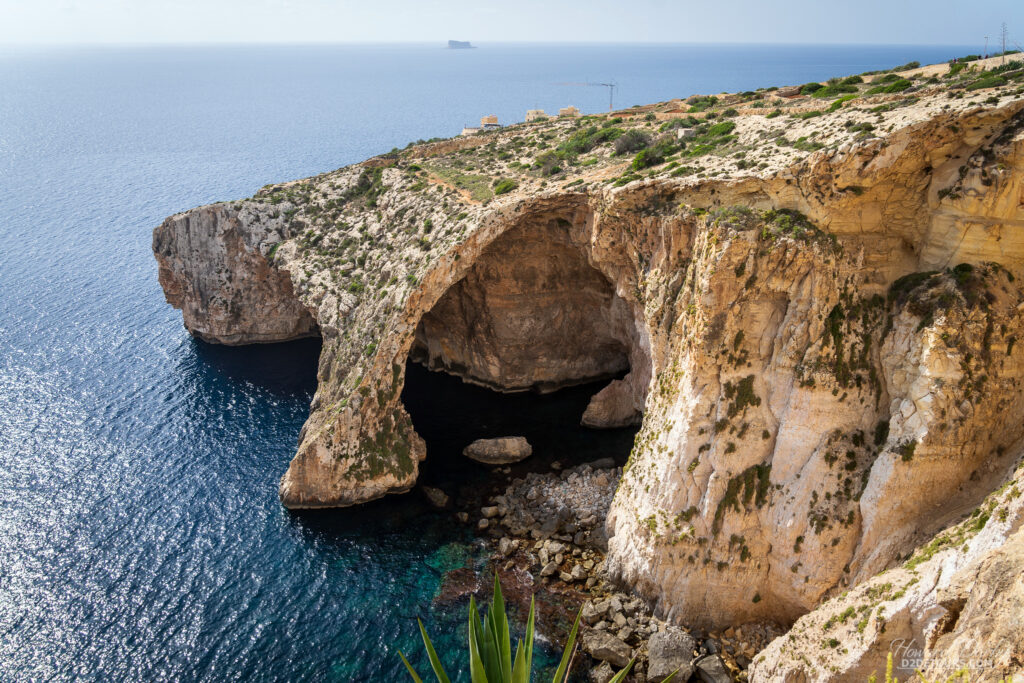

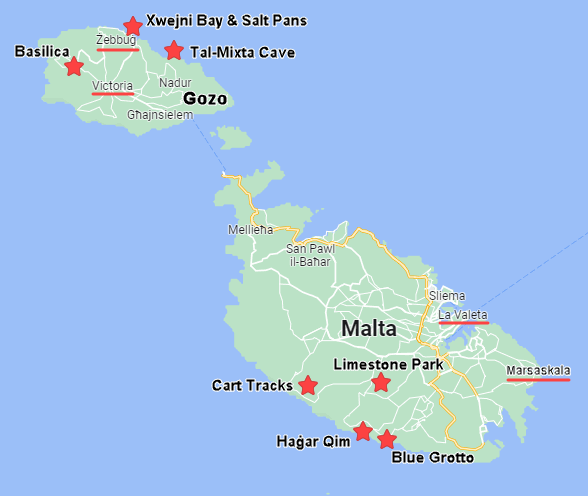

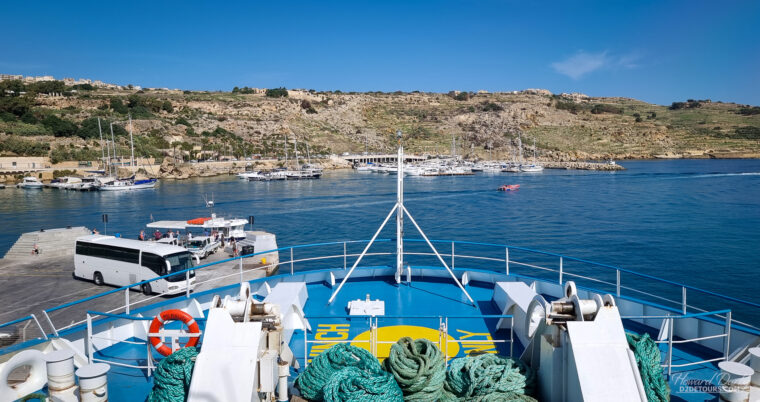
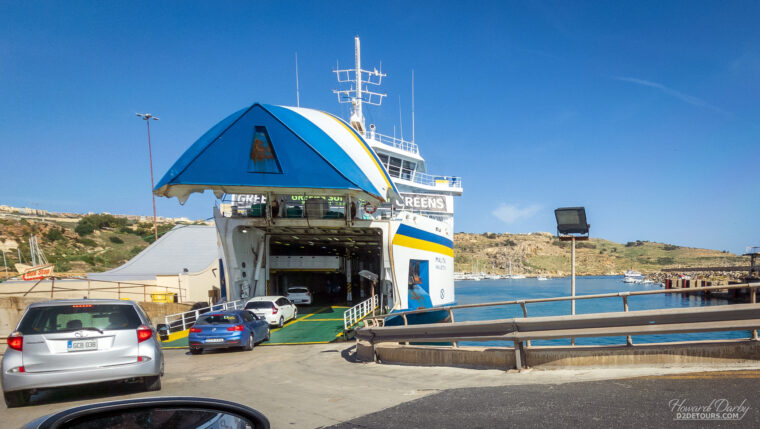
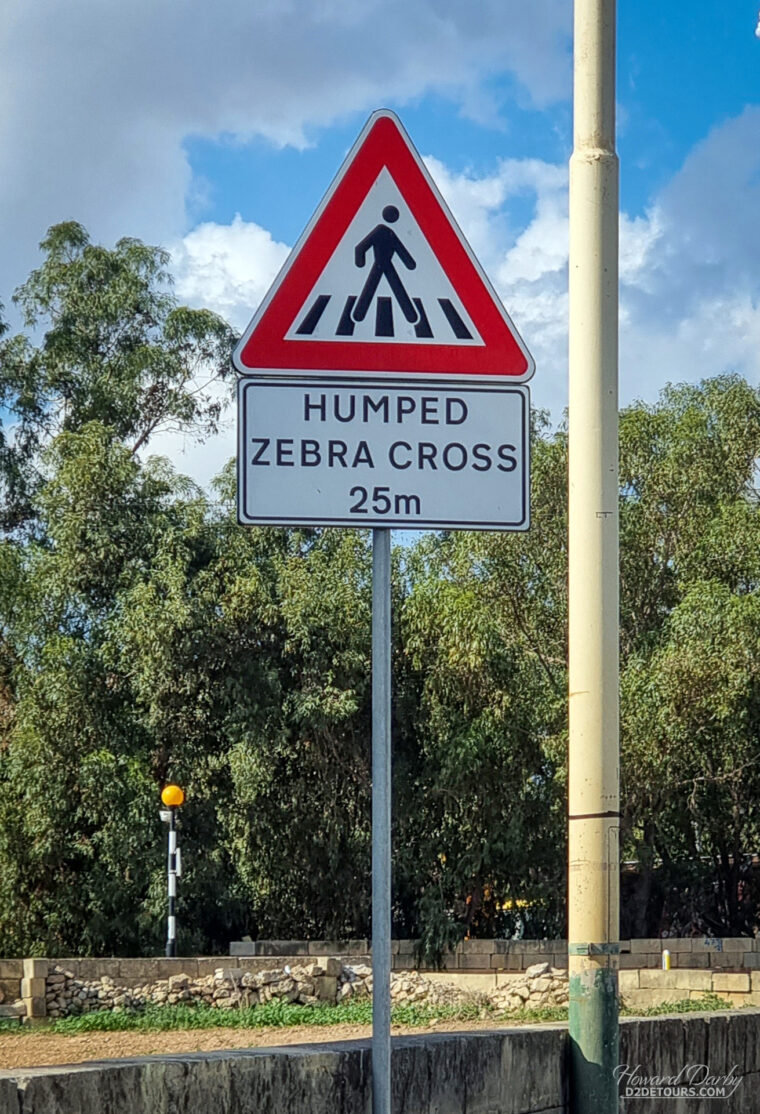
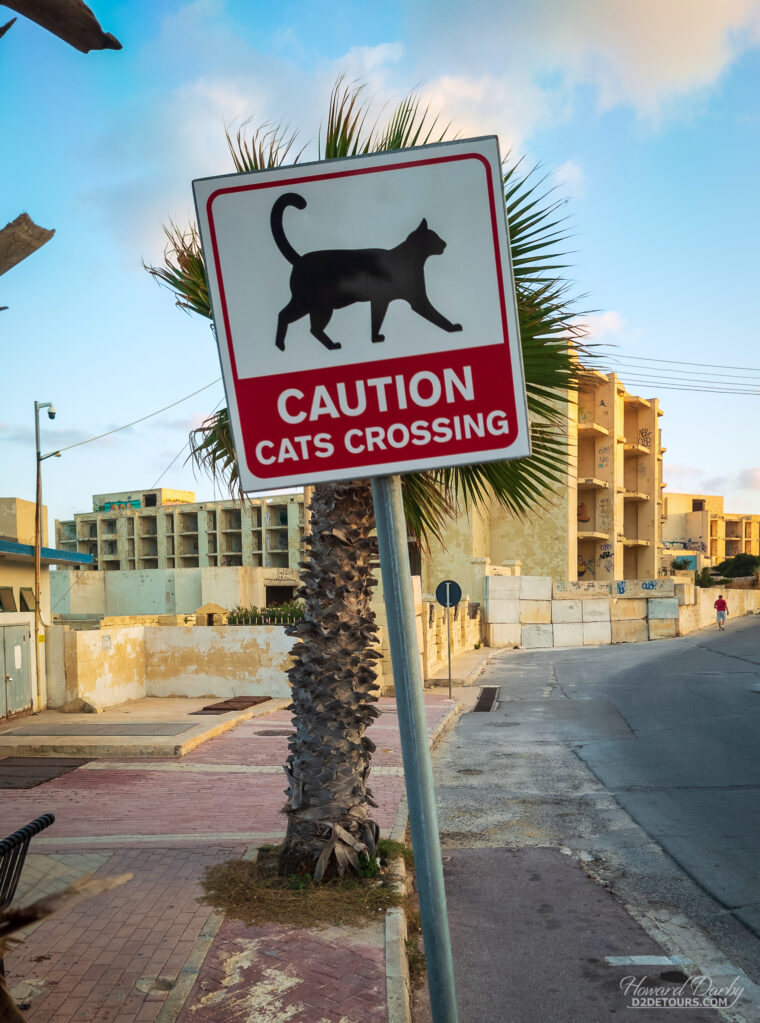

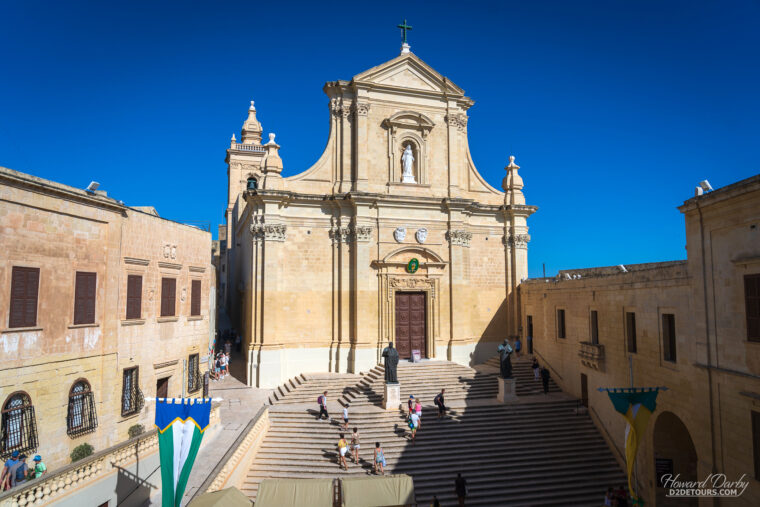
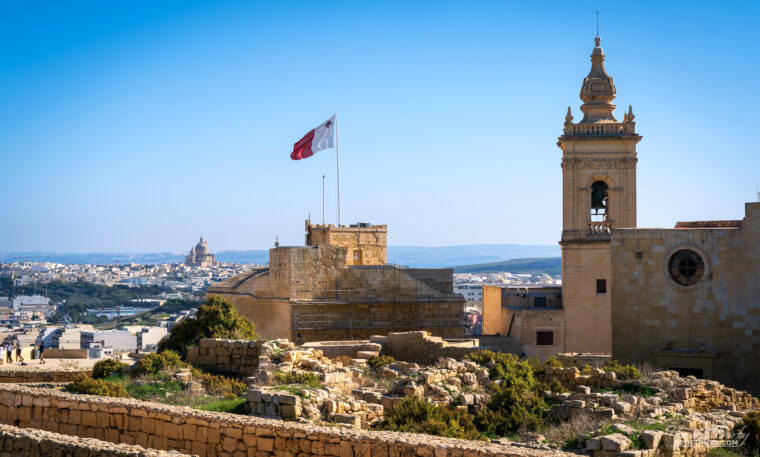
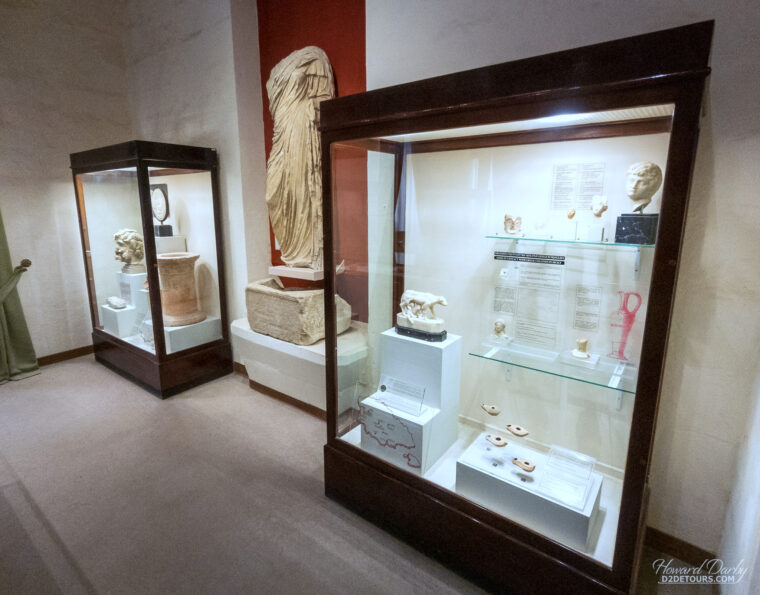

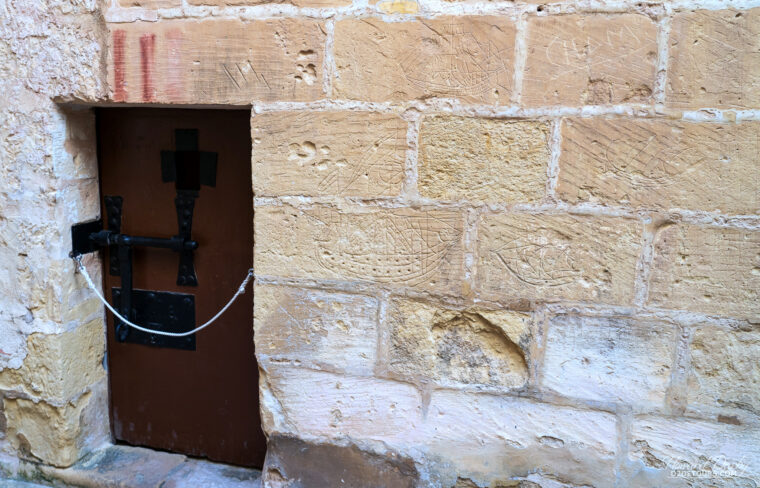


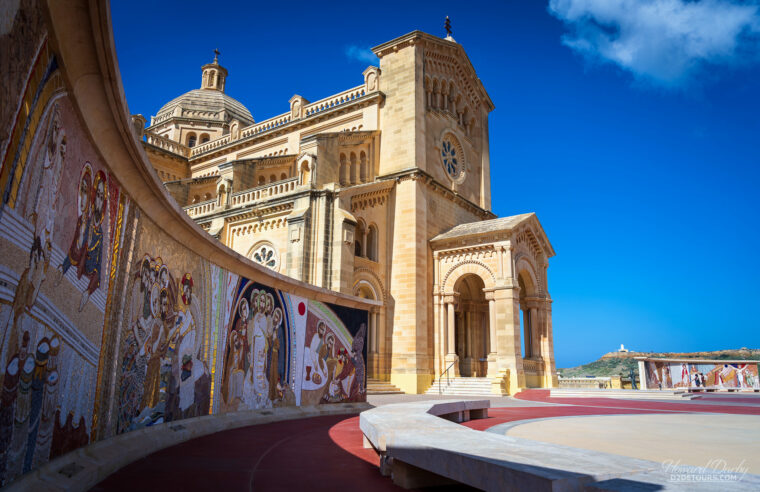

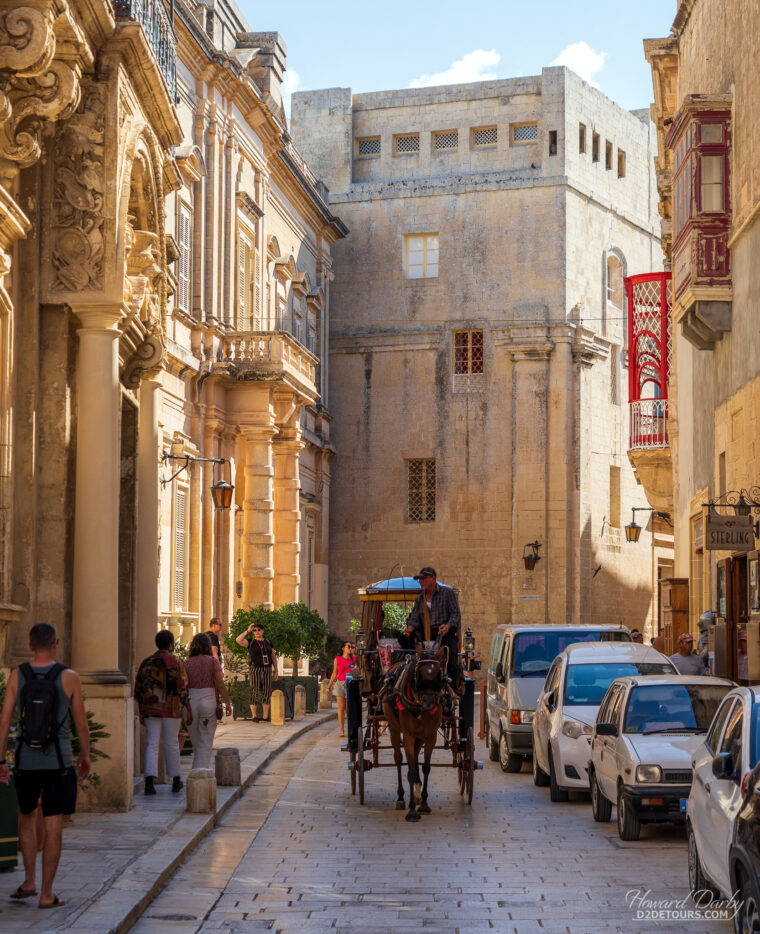

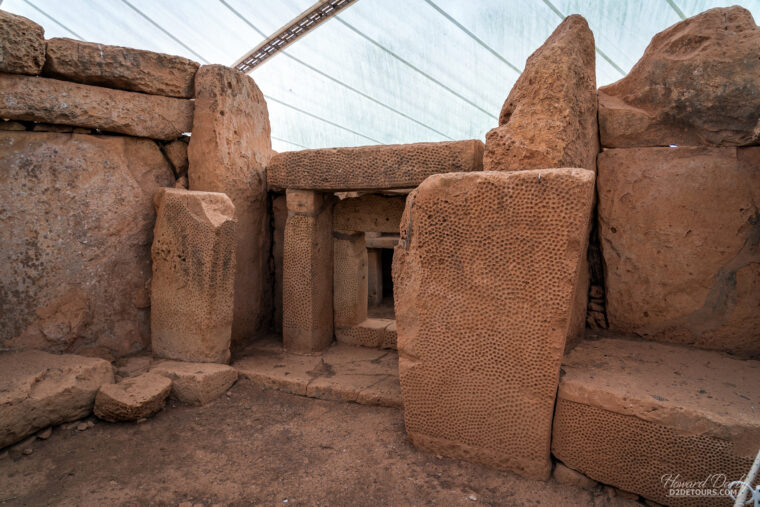

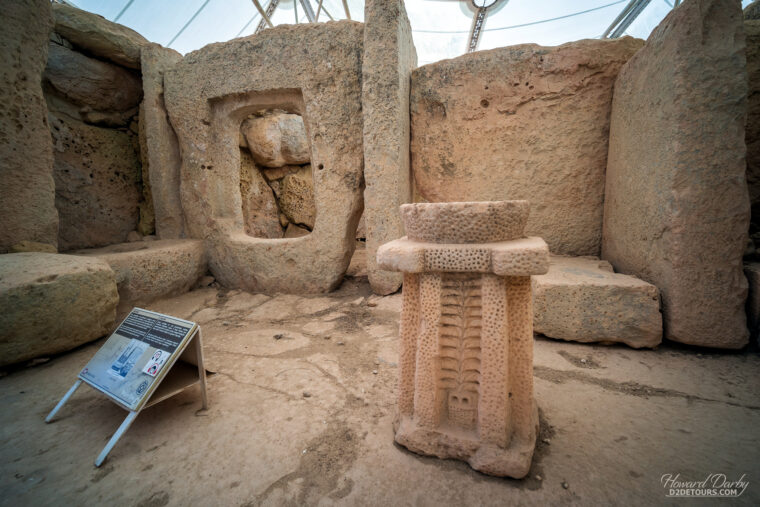
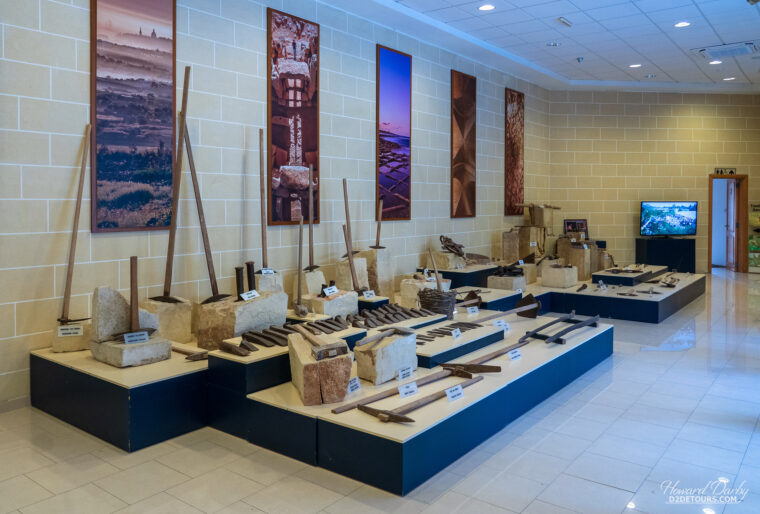
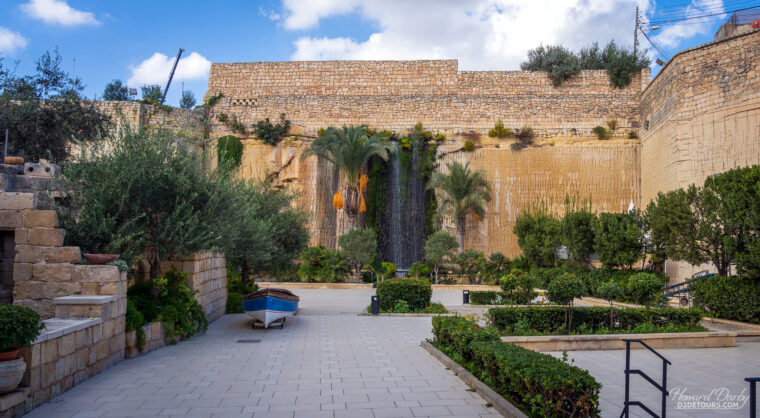
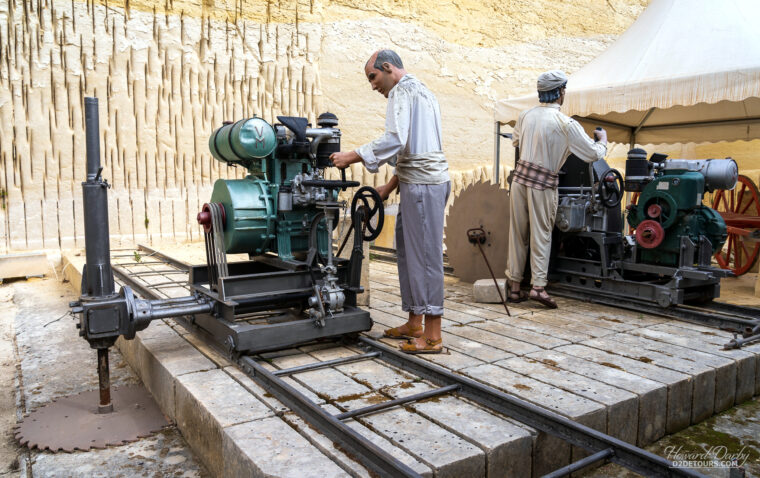
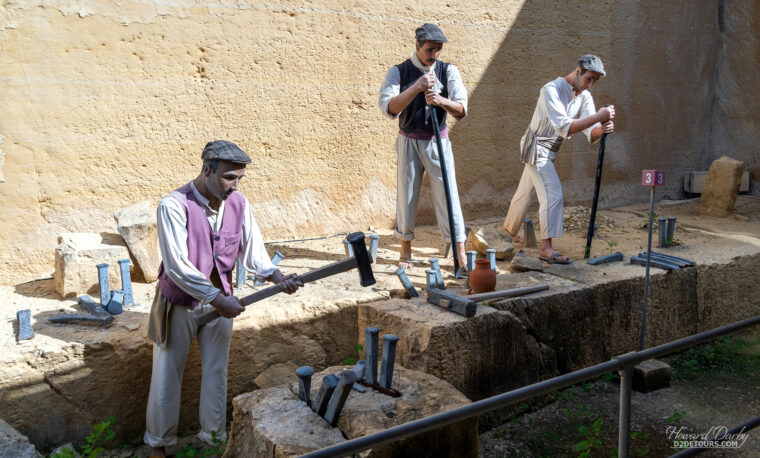

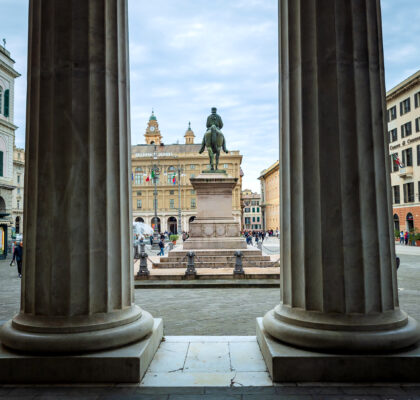
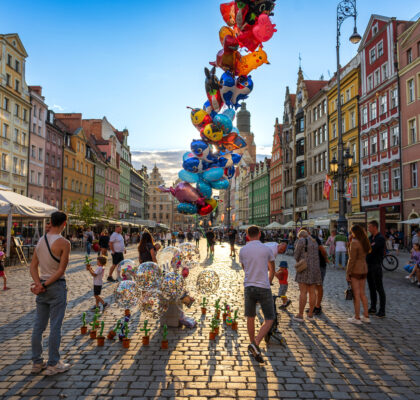
Pingback: European Road Trip 2022 – Top 5 Locations, Costs & Tips – D2 Detours
Pingback: Our Top 10 Destinations for Long Stays - D2 Detours
Pingback: Abandoned Places: Our Favorite Travel Spots! - D2 Detours